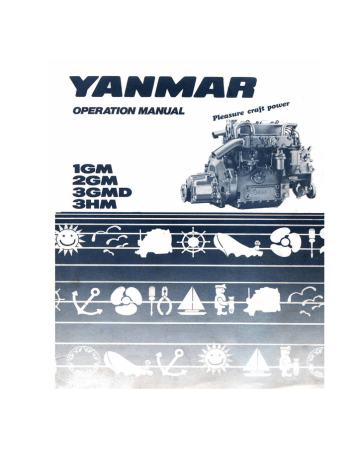VI. Starting the new engine for the first time. Yanmar 2GM, 3HM, 1GM, 3GMD
Add to my manuals
56 Pages
advertisement
▼
Scroll to page 2
of 56
advertisement
* Your assessment is very important for improving the workof artificial intelligence, which forms the content of this project
Key Features
- Compact size and lightweight design for easy installation in smaller vessels
- Advanced engineering and durable construction for optimal efficiency and longevity
- Impressive power output and low fuel consumption for a smooth and responsive boating experience
- Optional reduction and reversing gear for enhanced maneuverability and control
- Lube oil filter for cleaner engine operation and extended component life
- Starter motor for effortless engine starting
- Decompression lever for easier manual starting
- Anticorrosion zinc for protection against saltwater corrosion
- Fuel injection pump for precise fuel delivery and optimal performance
- Fuel injection valve for efficient fuel combustion
Related manuals
Frequently Answers and Questions
What is the purpose of the decompression lever?
The decompression lever allows for easier manual starting of the engine by reducing compression in the cylinders.
How can I check the engine oil level?
To check the engine oil level, use the engine tube oil dipstick provided.
What is the maximum installation angle for the engine?
The maximum installation angle for the engine is 15 degrees.
How should I connect the cooling water pipes?
Use a rubber hose with an inside diameter of 13mm for the cooling water pipes, and secure them with hose clamps.
What is the purpose of the seawater strainer?
The seawater strainer prevents foreign matter from entering the seawater pump, protecting it from damage.
How do I install the kingston cock?
Install the canvas on the outside of the hull and the canvas or rubber packing on the inside of the hull, then tighten the kingston cock.
What is the purpose of the reduction and reversing gear?
The reduction and reversing gear provides enhanced maneuverability and control by reducing the propeller speed and allowing for reverse operation.
advertisement
